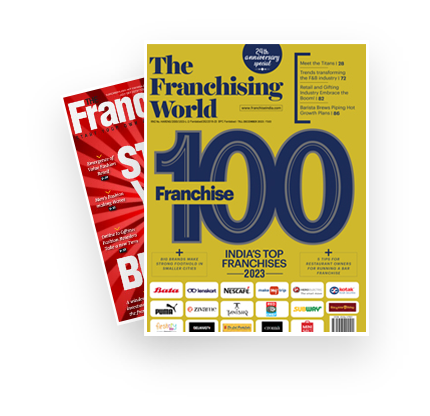
Value fashion retailers continued to outperform premium and branded apparel retailers during FY25, driven by structural factors such as rising aspirations in tier 2/3/4 cities, a continued shift from unorganized to organized retailers, deeper private label penetration and more options for consumers under one roof, and accelerated store expansion.
In FY25, the four listed value retailers —(VMM, V-Mart, Style Bazaar, V2 Retail) —posted combined revenue growth of 24%, supported by 16% retail area addition and healthy double-digit same-store sales growth (SSSG).
V2 Retail (V2REL) stood out with ~60% store area additions and 29% SSSG (vs. ~12-13% for other listed peers). In 4QFY25, their combined revenue rose 28% YoY, supported by ~16% YoY retail area addition and ~11% YoY growth in monthly sales per sqft (SPSF) to ~INR700 in 4Q (up 11% to INR754 in FY25). Growth was largely led by volume, as the average transaction value (ATV) for value fashion retailers was steady (down 2% YoY to INR935 in FY25 and up 1% YoY to INR929 in 4QFY25).
Margin profile of value retailers improved, as FY25 blended gross margins forn listed companies expanded 50bp YoY to 29% (~150bp improvement in 4Q), reflecting an improved product mix, higher MRP sales and procurement efficiencies. Vishal Mega Mart (VMM) saw the highest gross margin expansion of ~80bp YoY in FY25 (~180bp YoY in 4Q), driven by rising share of private-label brands. Pre-IND AS EBITDA margin expanded by ~180bp YoY to 8.2%, the highest in recent years, driven by improved sourcing (private label mix, vendor consolidation), operating leverage benefits, and better inventory turns. In 4QFY25, pre-INDAS EBITDA margins expanded ~230bp YoY to 6.1%, despite a 40% YoY increase in employee costs.
V-Mart accounted for 50% of the sectoral margin expansion, posting a sharp rebound to 4% (vs. near-zero in FY24), driven by lower losses in online venture (LimeRoad) and improvement in SSSG. While gains were broad-based, rising cost intensity from scale-up (warehousing,n corporate overheads) capped further margin upside. Steady expansion will require backend productivity gains and improvement in SPSF of new stores.
Working capital and cash flow metrics also improved meaningfully, supportedn by enhanced backend controls, tighter assortment planning, and faster full-price sell-through. Average inventory days remained stable at 83 (vs. 81 YoY), though the quality of inventory improved significantly, with a sharp reduction in aged stock. Working capital intensity largely remained flat at 23 days (vs. 22 YoY), aided by vendor-led sourcing and shorter procurement cycles, despite continued retail expansion. Pre-IND AS operating cash flows improved sharply to INR10b (vs. INR4b YoY).
Despite aggressive store expansion, free cash flow also improved to INR4b (vs. FCF outflows in past several years). However, this recovery was skewed, with VMM accounting for ~60% of sector revenue and the majority of profit and cash generation. Store expansion remained aggressive as companies added ~16% retail area YoYn in FY25, predominantly in tier 2/3/4 markets.
New store performance improved as reflected in rising SPSF metrics, though most of them remain in the early ramp-up phase. Rental inflation remained contained for value retailers; however, limited availability of quality real estate in priority clusters necessitated increased adoption of build-to-suit formats. While new store additions exerted near-term margin pressure, retailers expect operating leverage to kick in when stores mature. FY26 guidance implies 15-20% YoY area growth, with a focus on RoCE and payback benchmarks, ensuring capital efficient expansion amid intensifying competition.
Source: Motilal Oswal Financial Services Ltd.

